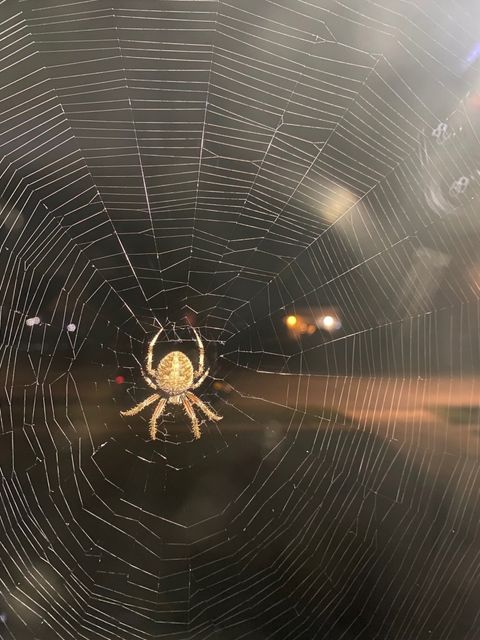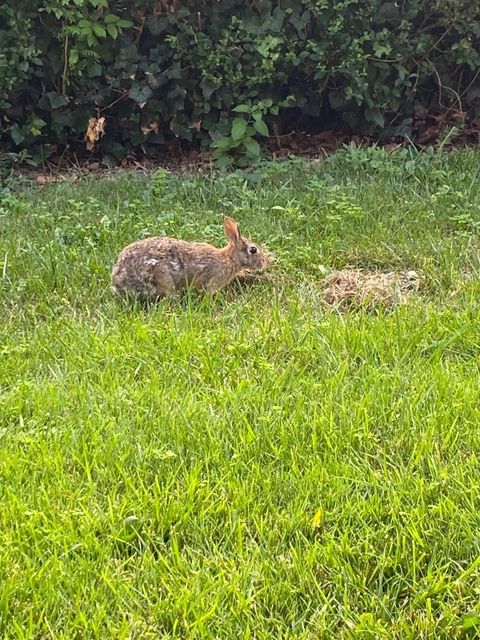The Coexistence of Urban Wildlife
BY: Hassan Travis-Frank

Have you seen many animals living in your backyard? Have you ever thought of welcoming them into your backyard? Different species of wild animals will visit your backyard to find food and a home to live in; they claim your backyard as their habitat.
There are many ways where you can create your backyard wildlife friendly. Setting up bird feeders and filling them up with different kinds of seeds; this includes sunflower seeds, peanuts rapeseed canary seeds, and safflower. Birdfeeders will attract many different types of birds; this includes blue jays, cardinals, black-capped chickadees, dark-eyed juncos, mourning doves, and house finches. You will be lucky enough to spot one of those birds while waiting patiently looking at your birdfeeder. For birds to clean the dust off their feathers and to keep themselves cool, a birdbath can be useful in your backyard for birds to visit. Birds will come visit birdbaths to wash the dusts off their feathers, and to get something to drink whenever they’re thirsty.
You can also provide a water source for big and small mammals; birds are not the only ones who need water sources to take a bath, many creatures will sometimes visit your backyard to drink. Aquarium of Niagara educator Autumn Syracuse explains, “you can do something simple as a birdbath or even just like having some sort of like collection bowl in your yard, collect rain water. You can even go to the extreme load; you know putting a pond in your backyard for some wildlife.” If you have a big lake in your backyard, you are lucky enough to spot more wildlife there, but it doesn’t have to be a huge lake.
Additionally, creating your own birdhouse is the best strategy to make your backyard wildlife friendly; you’ll need to find a safe spot where the bird will move into its new home. However, if you thought of making your own birdhouse, make sure you do your own research on which nest type a bird prefers. If you thought of protecting birds from feral cats, you can place a birdhouse somewhere in the tree, depending on the species. According to wildark.org, “cats are responsible for killing plenty of native birds so if you have a cat, make sure you put a bell around its neck and lock it indoors at night.” Cats are known to prey on native birds’ species, but it’s important to keep your cats indoors so native bird species would be safe, including your house cat.
If you ever had a bat visiting your backyard in the nighttime, you can build a bat box for your night flying mammal neighbor; it could be a safe place for bats to rest in. There are many benefits of why you should let bats hang around your backyard: Bats are pollinators, and just like bees, bats are attracted to the nectar of flowers and plants. Bats can even handle the mosquito situation; they prey on insects that infest in your garden and insects that tried to drink your blood. Not only bats help reduce the mosquito’s population, but it also reduces the use of pesticides. Lastly, bats help fertilized your plants and vegetables in your garden. Bat guano (poop) is an excellent fertilizer, and it benefits your veggies, flowers, and other plants; “the guano lasts a long time in the soil”, according to backyardkid.com.
There is one accessible way of making your backyard wildlife friendly: you can let your grasses continue growing; as you stop mowing the lawn, the grass will keep growing and there are a lot different types of insects that live in the tall able grasses. According to Sarah, a student in Niagara County Community College, explains, “I probably stop mowing the lawn. My younger sister she’s about 10 years younger than me, her father used to work for the state parks, and one of their most recent projects. He was a part of that and one of his contributions was to say that a lot of species of bugs and insects who aren’t able to live in that area no more because the grasses isn’t growing to the proper length. So now you’ll see as you drive on that street by the river downtown towards the state park that there’s a lot of areas with ingrown grass and they do that purposely.”
Reducing pesticide is another way to make your backyard more wildlife friendly; although pesticides are used to kill invading insects that infest in people’s gardens, it also kills important insects like bees, butterflies, and ladybugs. Not only does it harm bees and ladybugs, but it can also harm birds and mammals. You can even replant native plants into your backyard; native plants attract many native wildlife species, and it provides food and shelter for them as well. It also attracts bees who are important pollinators, as they pollinate food crops and they will transport to one flower to another and fertilize it. Fortunately, this is best way to eradicate invasive plant species. There many different types of native plant species you can regrow; this includes Doll’s Eyes White Baneberry, black cohosh, red baneberry, white snakeroot, swamp milkweed, common milkweed, and wild indigo. Most of these plants will attract butterflies, especially milkweeds.
Although these strategies are the most positive way to make your backyard wildlife friendly, it is best not to go overboard while making it a friendly place for wildlife. It will attract invaders like rats, mice, aphids, and sometimes groundhogs. Although most individuals do not see these animals as pests, but are living creatures who are trying to survive. “A lot of cities and towns want to make sure that animals like rats and mice and others what they called disease vectors, you know animals that might bring sort of diseases, make sure they’re not being as attracted to the area. Which is hard, as they rely on a lot of the same resources as some of the more attractive animals,” explained Autumn Syracuse. Even though some animals people see them as pests can be a problem, they are still living creatures who are surviving in their environment and trying to find specific food sources.
We can find a way to live in peace with wildlife that visit our backyard. Many of us respect them as our neighbor, and we feel that they need to be treated like friends. Sometimes we never get a chance to coexist with animals from the great outdoors, but when we make them feel welcome in our backyard, we still get a chance to coexist with them. “I mean they’re fine as long as you know don’t disturb anything in the backyard. Turn anything up you know come and eat or sh*t and bathe, the little birdbath you could make for them, and then you come and go coexist and it’s just fine,” said NCCC student Brittany Davis. These are brilliant strategies for you to use if you want to make your backyard wildlife friendly, and will help you coexist with animals and treat them as your neighbor and friend.


